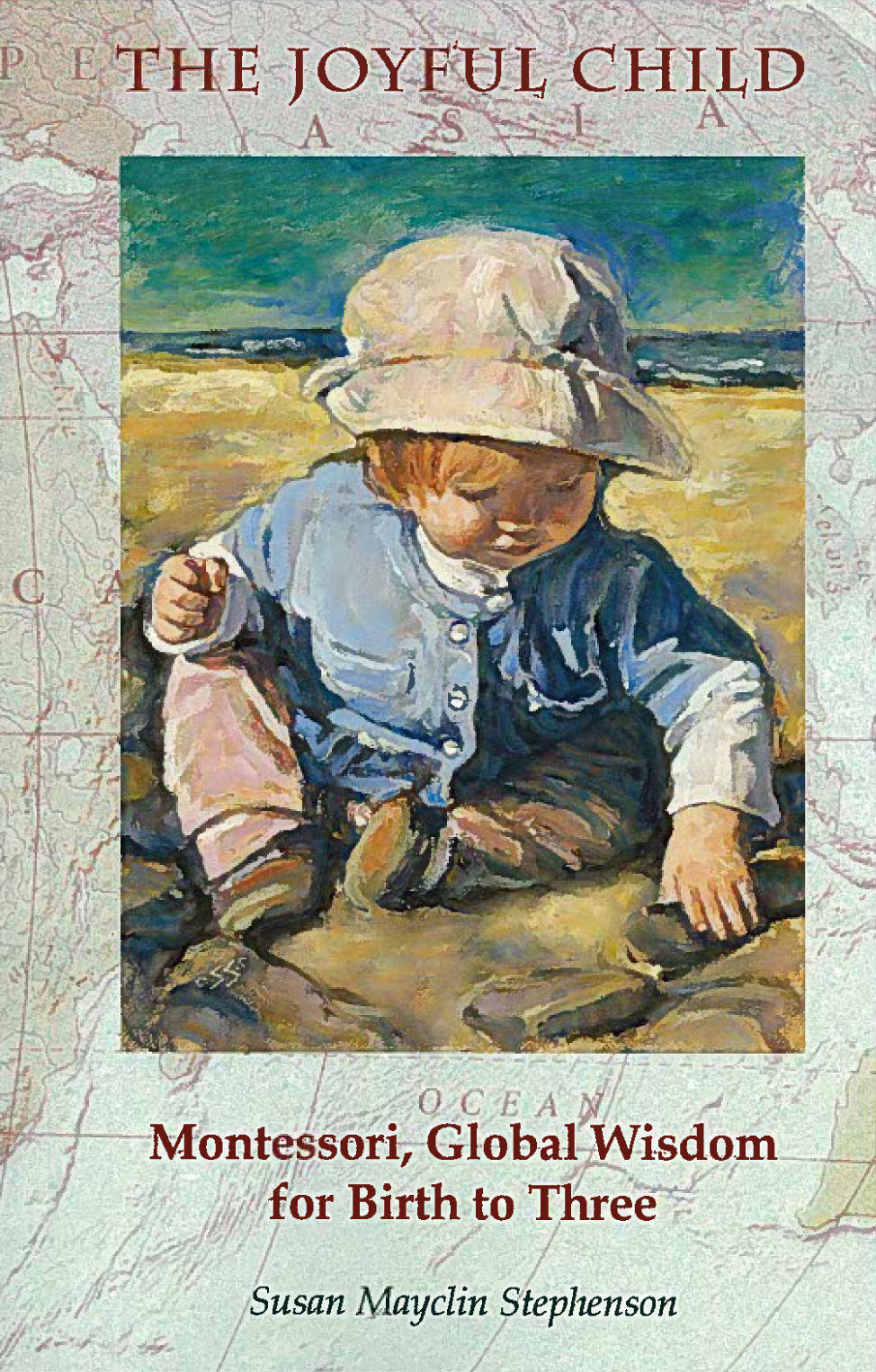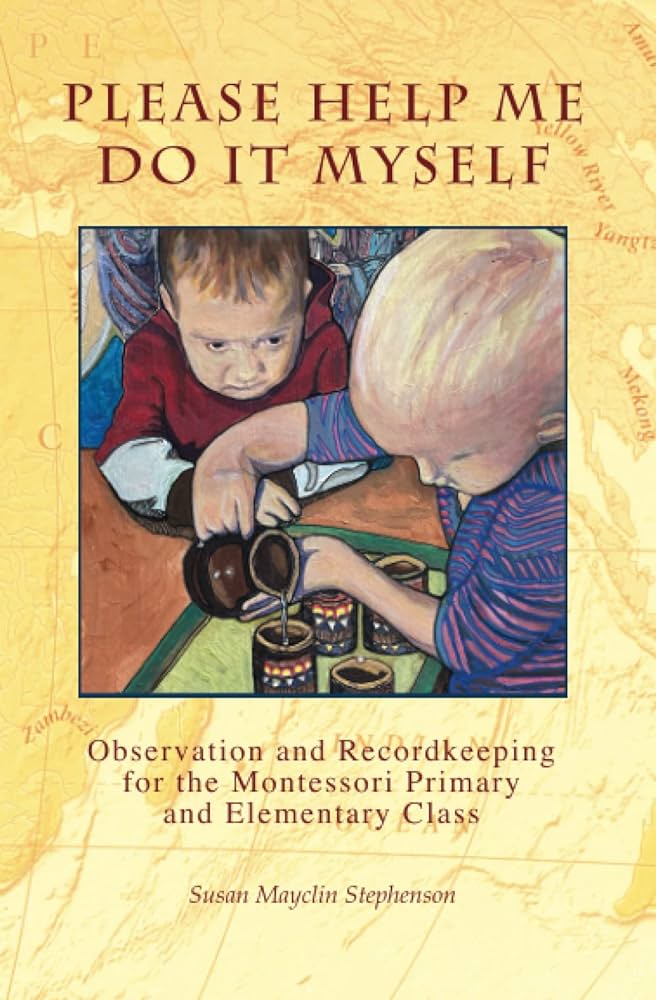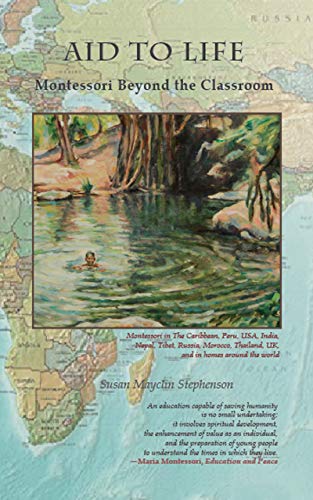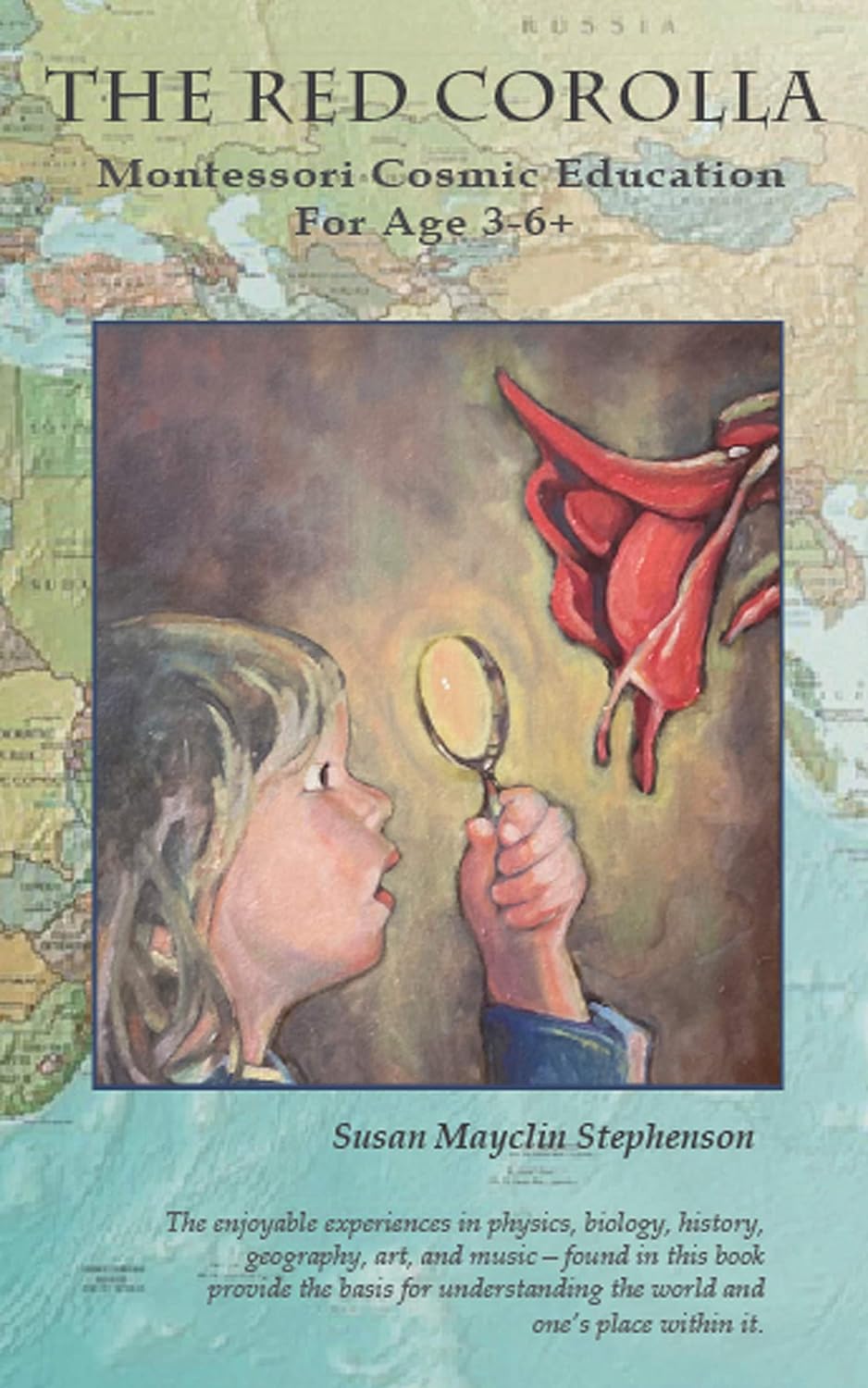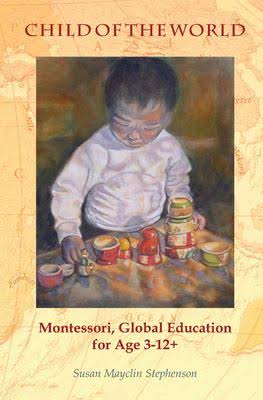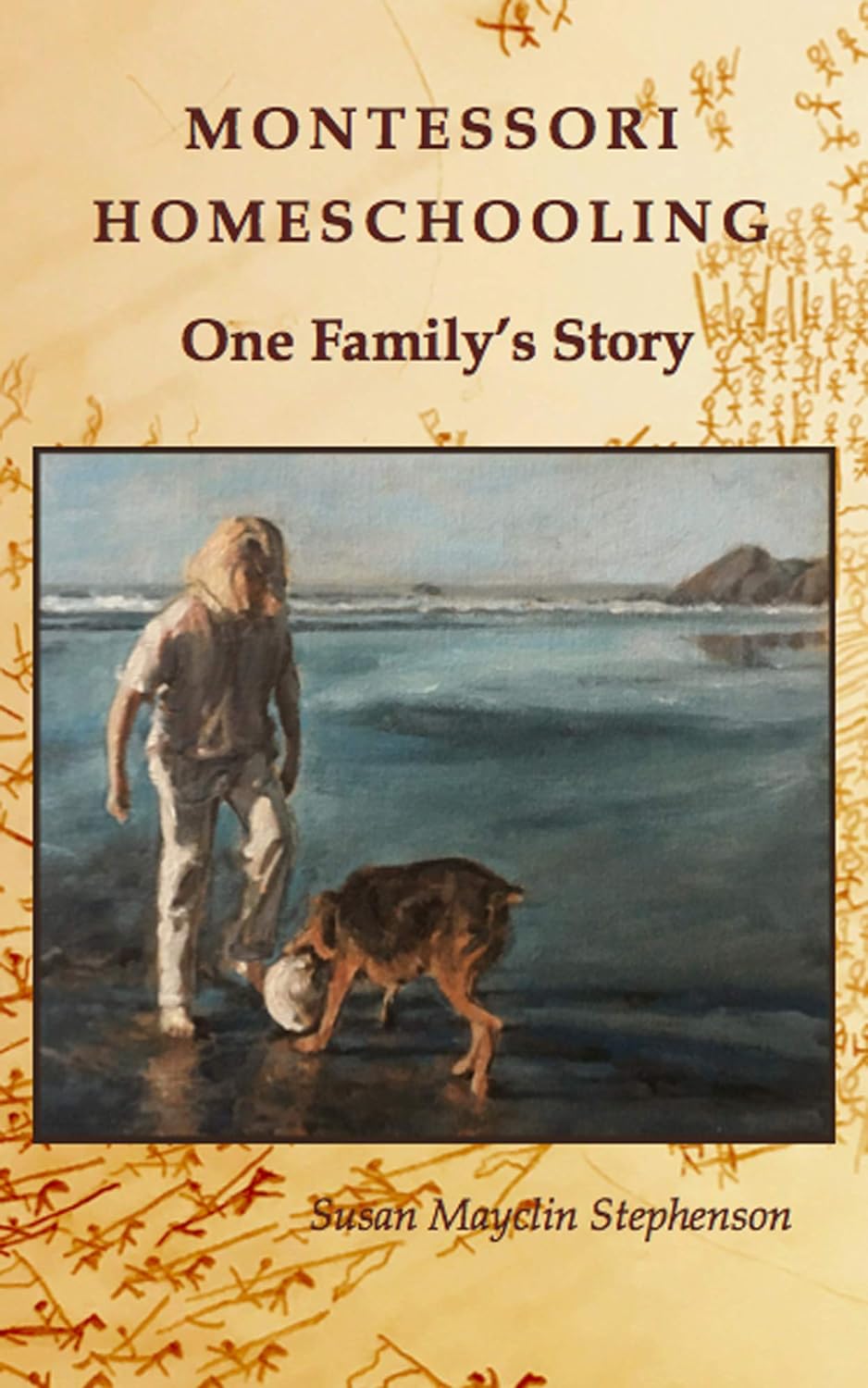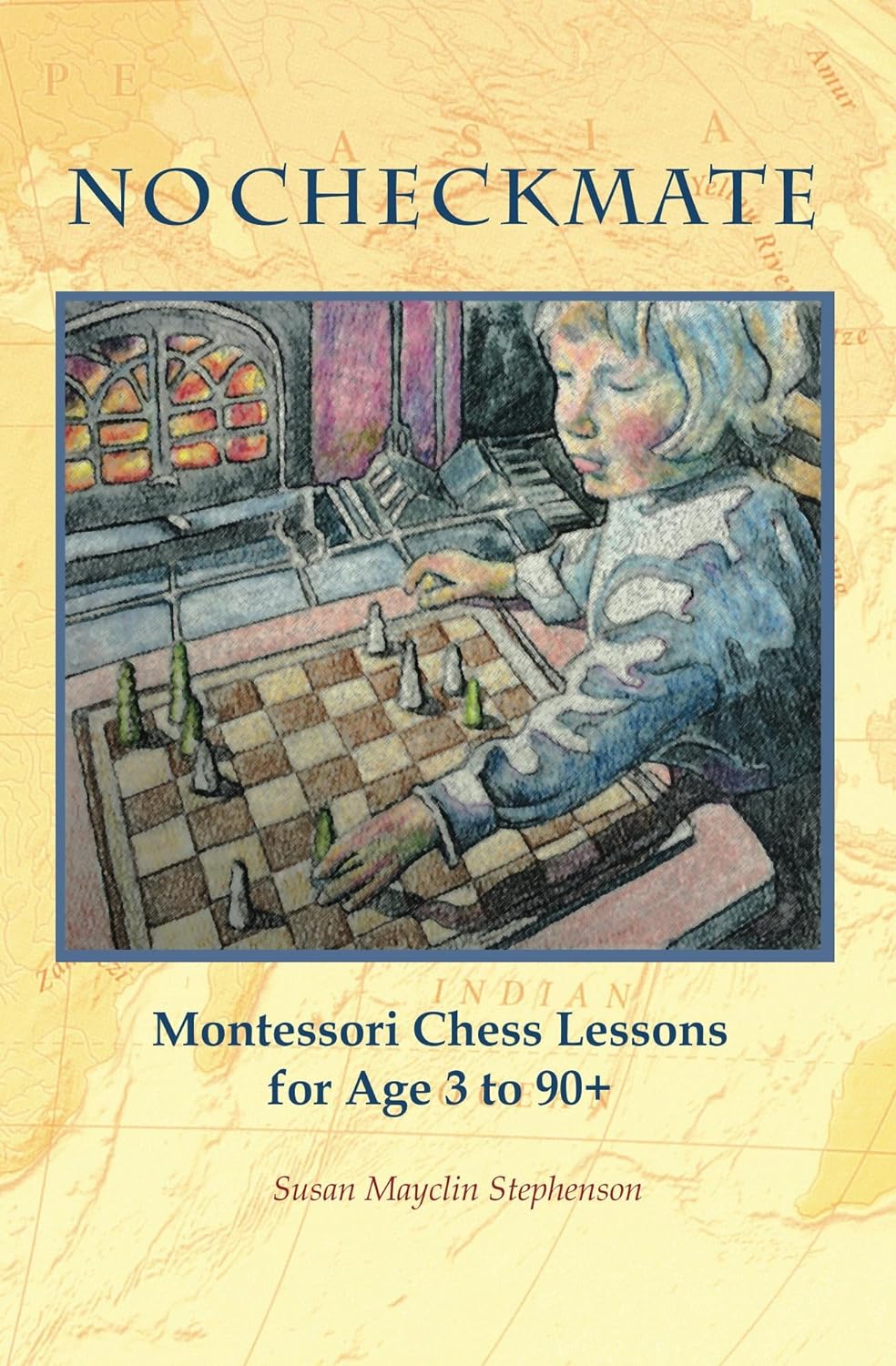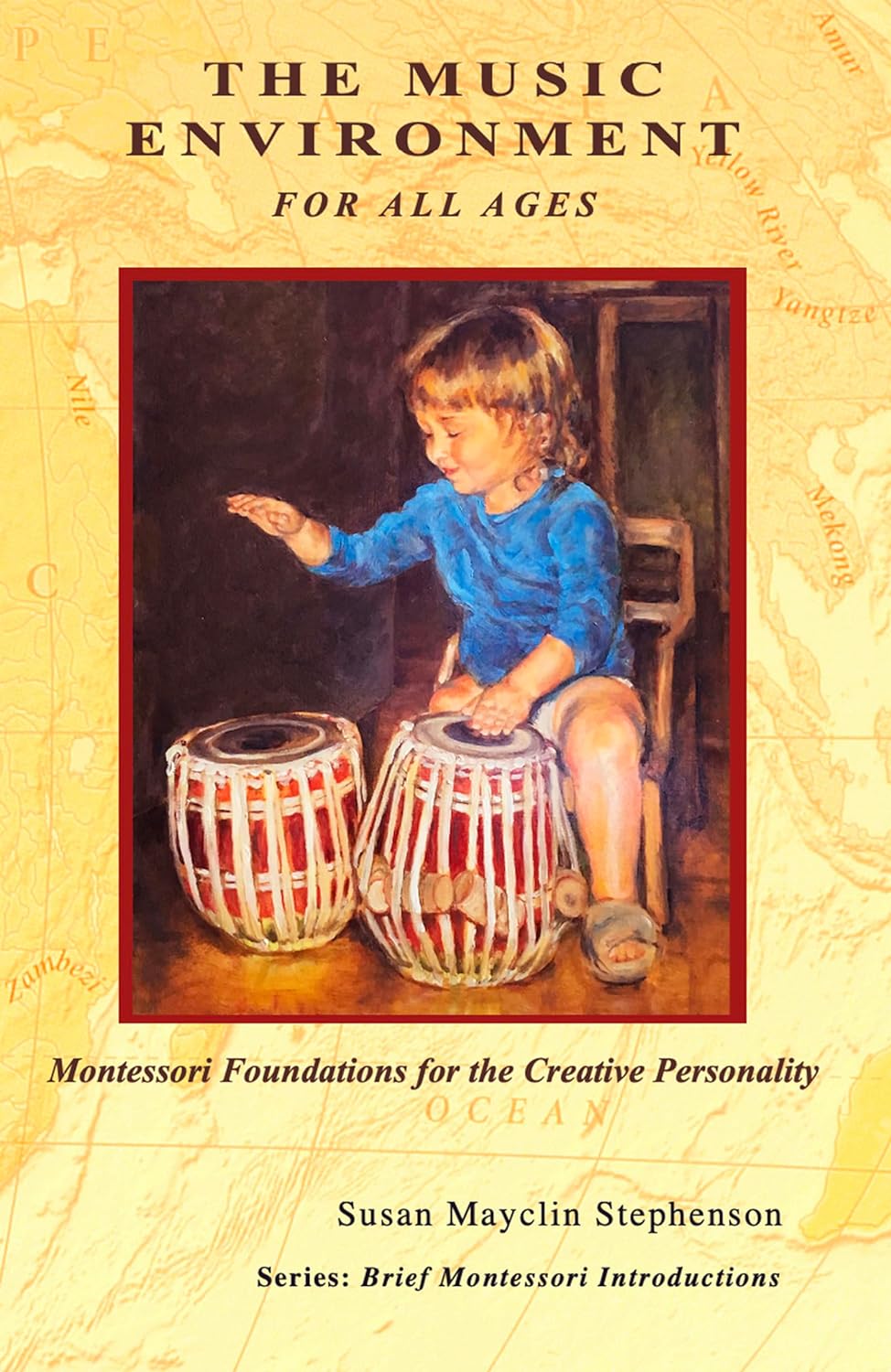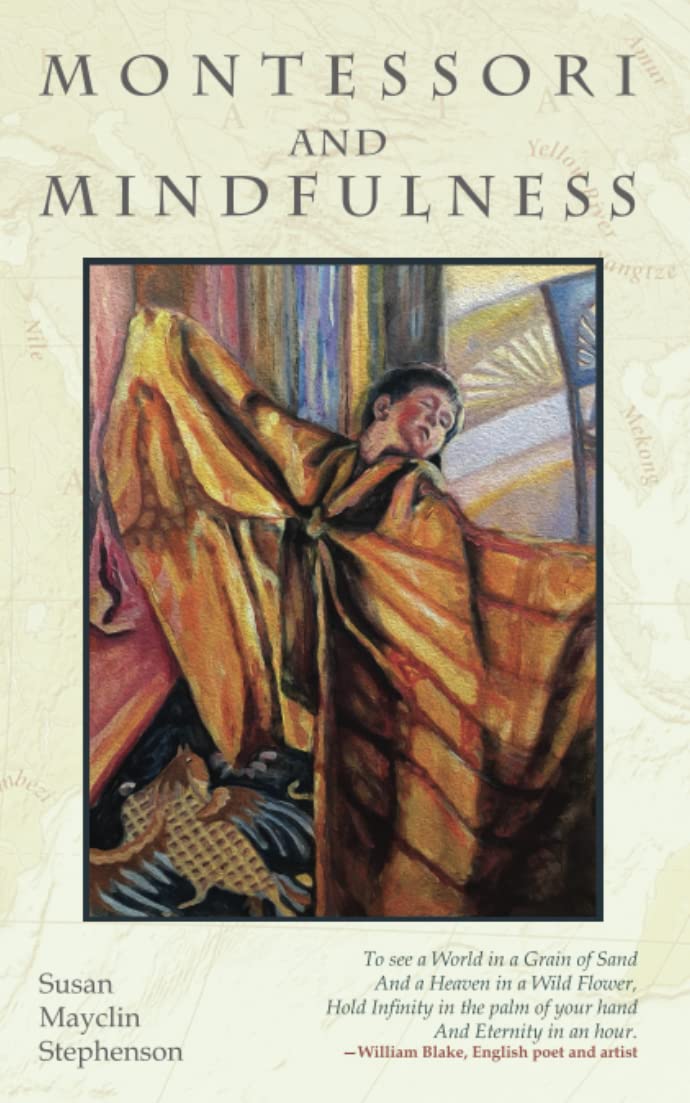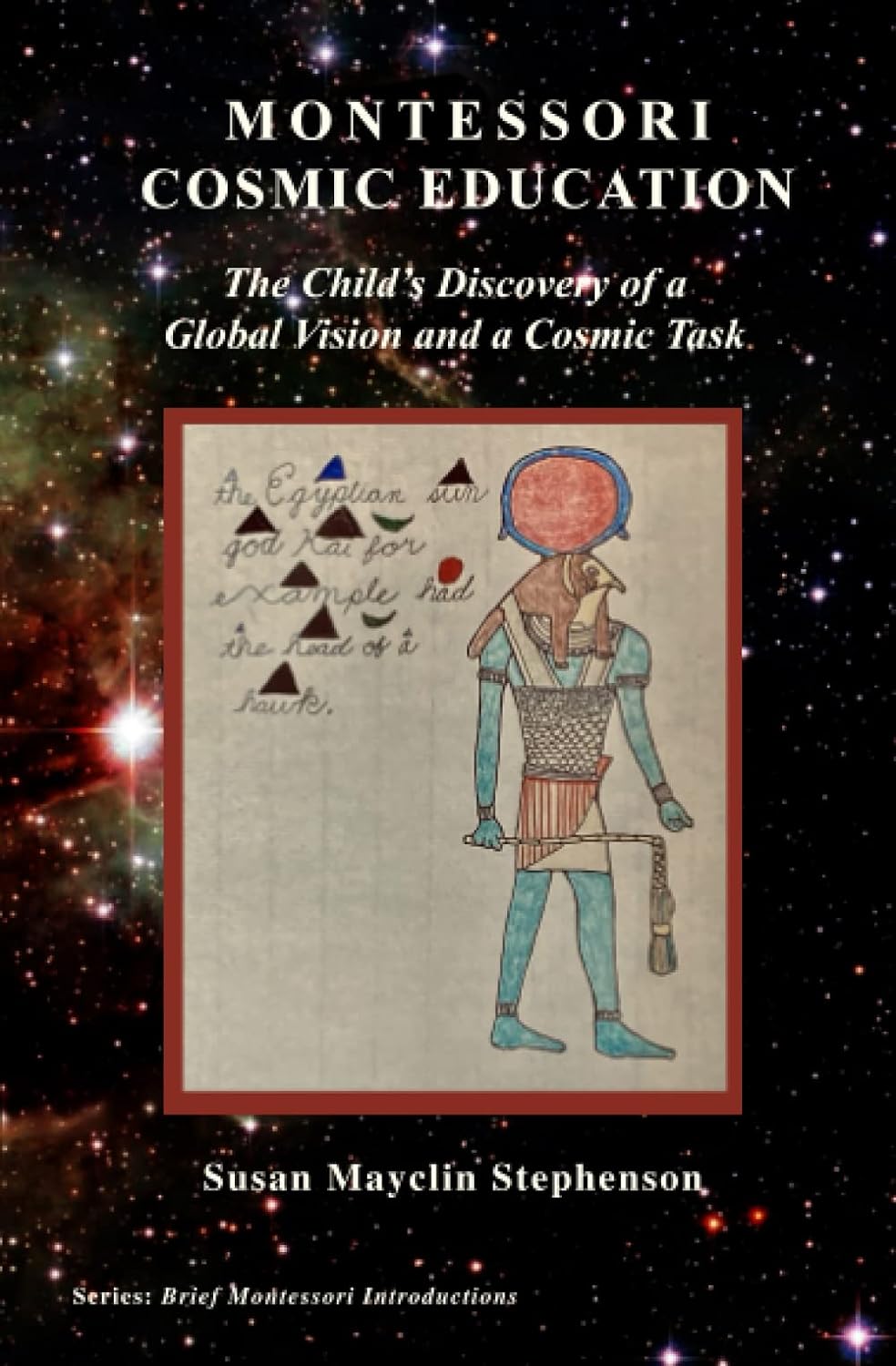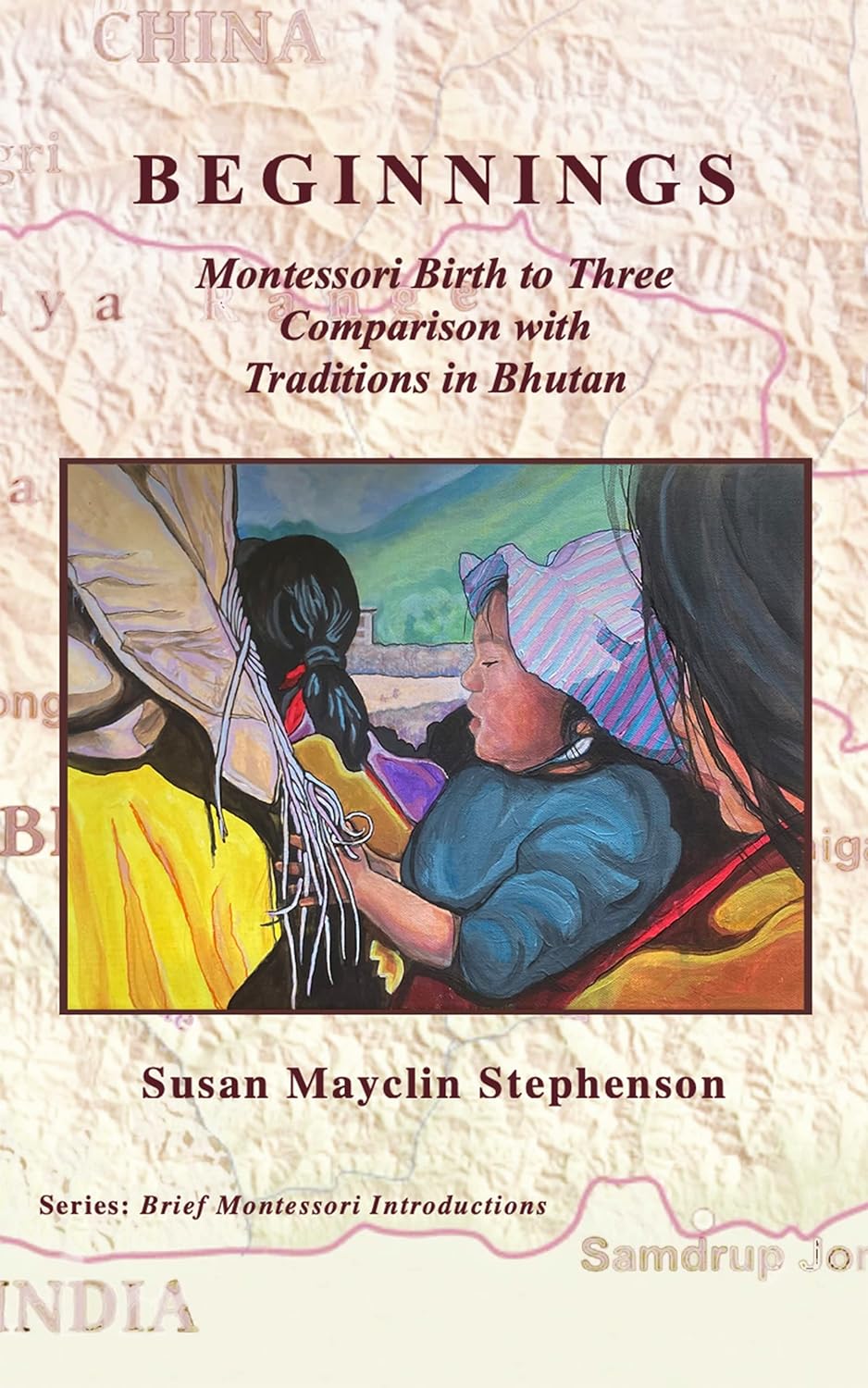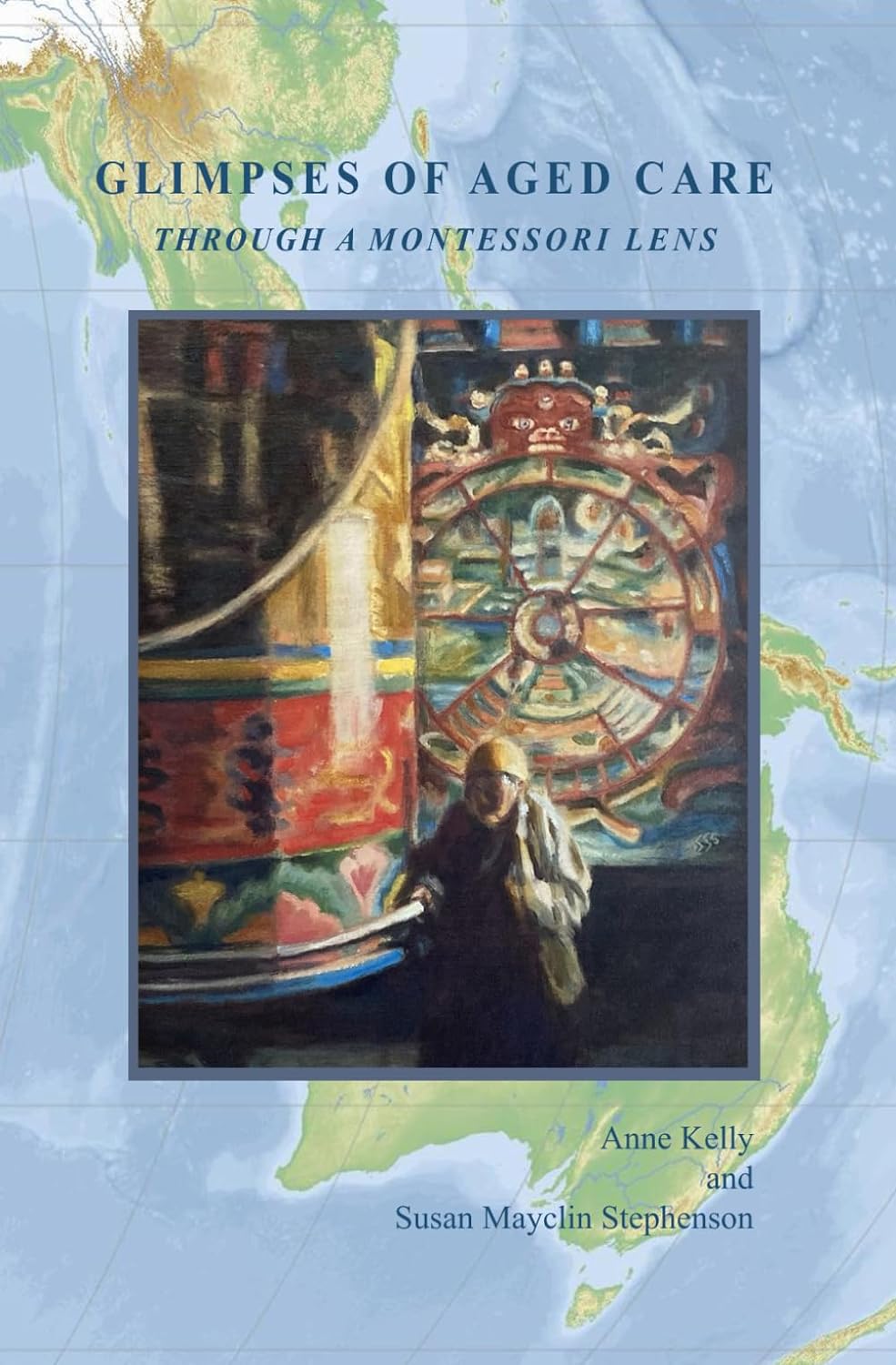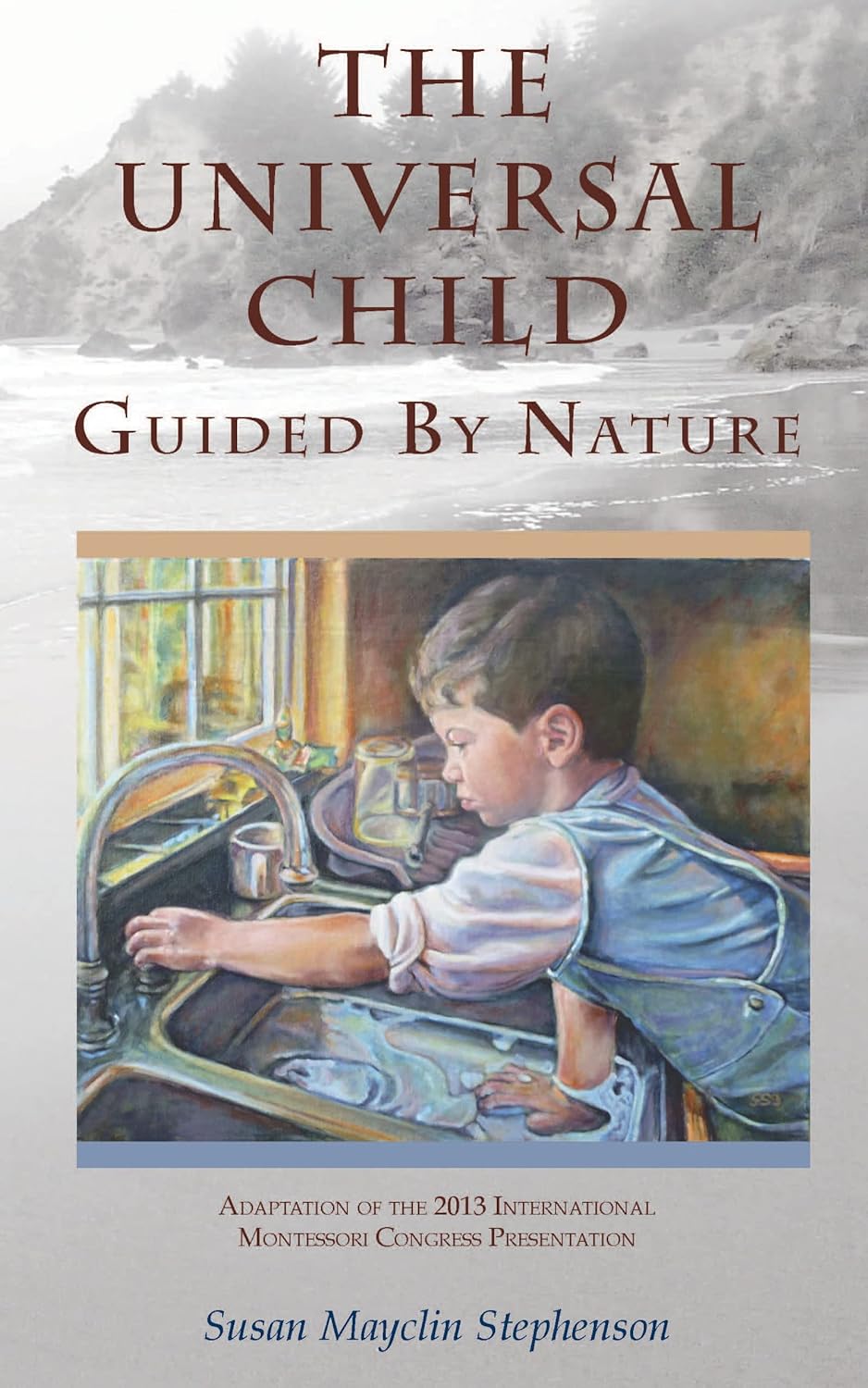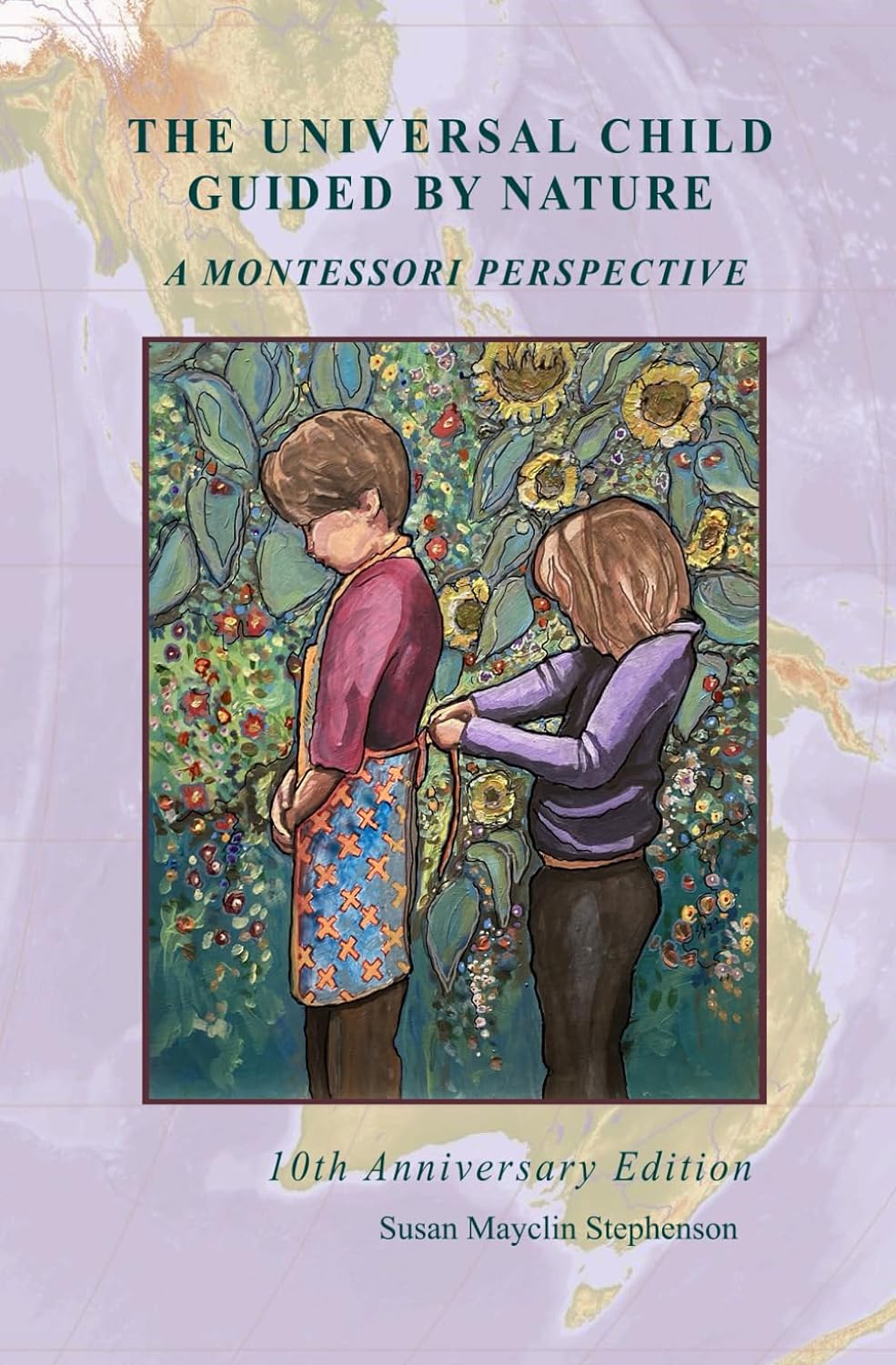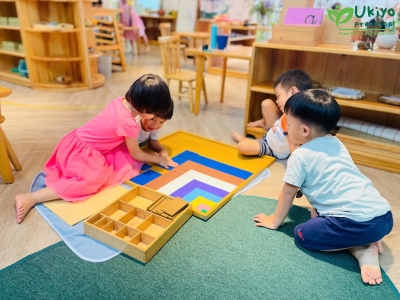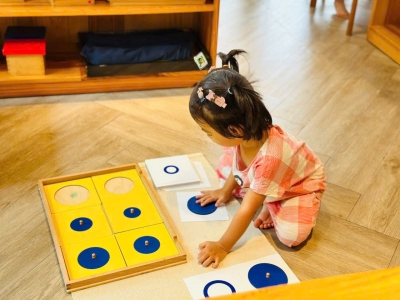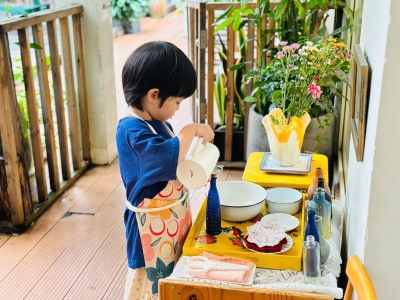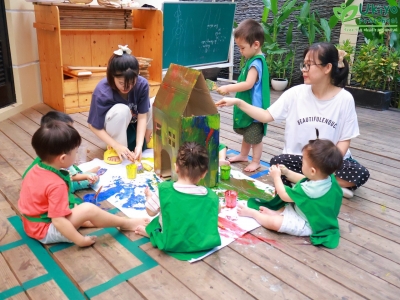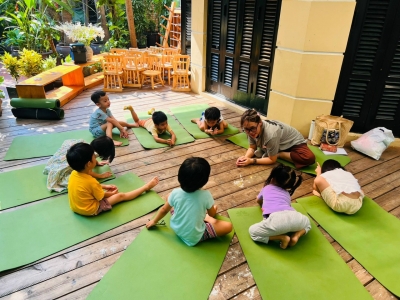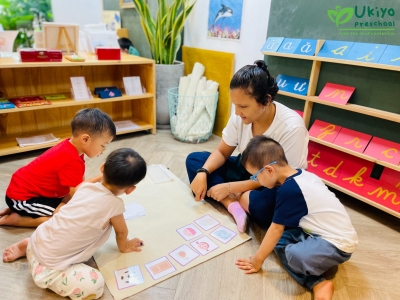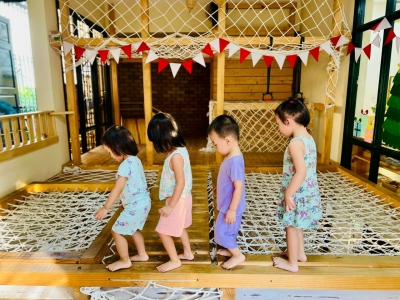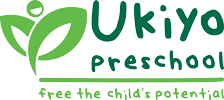REVIEW OF SUSAN MAYCLIN STEPHENSON'S BOOK
|
|
This rich but brief introduction is based on the author's 50 years of experience as a teacher, parent, grandparent, school consultant, government consultant, speaker, and oral examiner for Montessori teacher training courses. Montessori guidelines presented here have held true all over the world, no matter what the culture of the child, for over 100 years and prove to be as true now as ever. It is the goal of this book to help parents look for, discover, appreciate, and support the mental, physical, and emotional needs of the child in the first three years of life, in their own culture. There are over 180 black and white pictures from the author’s work around the world with children from birth to three years of age. "The Joyful Child" is used in Montessori teacher training centers, middle school human development classes, birth preparation classes, and it is of interest to anyone studying education and child development. It has been translated into several languages and is often used as a text for parenting classes. Chapters: The First Year—The senses: Before birth; music and language; crying as communication; seeing and processing; the absorbent mind; materials The First Year—Reaching Out and Grasping: The development of movement; toys that aid the natural development of movement; natural materials for toys The First Year—Sitting up and Working: The child’s Work; eating and working while sitting up; safety concerns with new movement abilities; number of toys available at any one time, and learning to put them away; suggested toys The First Year—Freedom of movement; a safe and natural environment; crawling, pulling up, standing, and walking; toys and equipment that aid movement development The End of the First Year—Unique Development and the Child’s Self-Respect: Each child’s path of development is unique; aiding the beginning of a good self-image; preparing the home to welcome the newborn; clothing that supports free movement; attachment and separation, preparation for weaning and toilet learning; sign language and elimination communication (EC); materials that support optimum growth and development; unconditional love; the end of the first year Age 1-3—Care of Self, Others, and the Environment: Participating in the real life of the family; kinds of practical life activities; the work environment and concentration; materials; undressing and dressing; a place for everything and everything in its place; The child's purpose; the needs of the parents; adults and children working together; the child's research of the rules of society; teach by teaching, NOT by correcting; offering choices Age 1-3—Toys and Puzzles: Selecting toys; organizing and rotating toys; learning to put toys away; respecting concentration; visual discrimination and eye-hand control; puzzle toys; open-ended toys Age 1-3—Music: Dancing and singing; percussion instruments and other music materials Age 1-3—Language: Listening comes first; a second language; listening and including the child in conversation; vocabulary, words, pictures, and books; formal language; storytelling, reading and writing; biting; imagination? lying?; materials; supporting language development Age 1-3—Art: Art is more than drawing; art materials; art appreciation; art work Age 1-3—People: Daily life of people of the world; materials Age 1-3—Plants and Animals: A natural love of nature; experiencing and naming plants; gardening; observing and caring for animals; materials Age 1-3—Physical Science and Math: The beginnings of physicals sciences; the beginnings of math Age 0-3—Preparing the Environment: What do we need for a new baby? safety; general environment principles; the environment and the absorbent mind; the outside environment; materials; conclusion Age 0-3—Parenting and Teaching |
|
|
This book is based on many years of lectures and workshops on authentic Montessori classroom practices in over thirty countries. In order to meet the needs of children in Montessori primary and elementary classes, the skill in observation, and keeping records of the children's progress, is essential. The author shares her personal experience, through basic practices and interesting stories, working with children and young adults, from age two through high school, in Montessori environments. The book ends with an enlightening chapter that shares the potential and needs of the adolescent. It is called "Becoming and Adult." |
|
|
In "Aid to Life, Montessori Beyond the Classroom," the author shares stories based on fifty years of Montessori work in thirty countries, first as a teacher of children from 2-13 in Montessori schools, then discovering new ways to use Montessori principles in a variety of situations—all aimed at inspiring, and providing practical ideas, to parents and teachers today. Here are some examples of her stories: preparing a group of elementary students in the Virgin Islands to run the class on their own; learning how to teach Montessori with no Montessori materials in a private girls school in Peru; applying Montessori in everyday situations by means of a Q and A newspaper column (twenty topics including self-esteem, preparing the home for a newborn, multiple intelligences, teenage troubles, homeschooling, and more); helping poor village children in a boarding school in Kathmandu, and blind children in Tibet; meeting with five other Montessori teachers, doctors, philosophers, educators, scientists, and the Dalai Lama in Sikkim to solve the country’s educational problems; visiting a school where Montessori helps severely disabled children and young adults in Russia; initiating a “first Year Montessori project” in an orphanage, helping village schools, and lecturing on the first Montessori 3-6 training course in Morocco. Susan shares two stories from a meeting of Educateurs sans Frontières in Thailand: Montessori help for mothers of babies born in prison, and for elders living with dementia. Enjoy the chapter describing the author and her husband reliving the book "Eloise in Paris." dictated by a four-year-old (used in the language area of some Montessori teacher training courses), and a detailed observation of a day in an authentic Montessori 3-6 class that is sure to inspire many teachers. Near the end of the book the author shares some of the solutions based on consultations with schools, and conversations with parents today, due to the unique situation of remote learning due to the pandemic. Age 0-6: She gives suggestions on handling frustration and limited setting, welcoming the child into the daily work and activities of the family, understanding the value of protecting concentration, providing opportunities for children to be helpful and feel needed, and how to share the family ethics, morals, and even religions, in age-appropriate ways. Age 6-18: She explains the Montessori concepts of cosmic education and beginning the search for one’s cosmic task, so important at this age. She discusses homeschooling, the reasons and variety of methods, and her own experience of guiding her son’s self-chosen twelve years of homeschooling without materials or grades, but following interests. The last chapter, Stages of Development, the author explains how a Montessori education is completely different for birth-3, 3-6, 6-12, and 12-18. Rather then beginning with a desired standard academic curriculum, the learning is based on the needs and tendencies of human beings at different ages and planes, or stages, of development. As a result education becomes a joy. There are practical examples for parents and teachers. In the “Resources and Books” section, there are links to many of the projects described in the book, such as the school for the poor in Nepal. There are links to Montessori initiatives such as Educateurs sans Frontières she experienced in Thailand, Montessori for Dementia, the Montessori course for teaching adolescents, Montessori sports. There are also details about the author’s seven previous books, each one presenting Montessori in very practical examples from a unique perspective. |
|
|
(Second Edition, 2023) These science and arts "culture" lessons are taught in Montessori teacher-training course—physics, biology, history and geography, and the art. They prepare the child for the Cosmic Education of the Montessori elementary class, and are presented here in great detail. Also included are personal "filling in the gaps" assignments for the parent or teacher. During a lecture in Ulaanbaatar, Mongolia I was asked to give explain Dr. Montessori’s idea of a cosmic task. I explained that, especially during the elementary (ages 6-12) years, when a child is introduced to the creation of the universe, the evolution of life on earth, and the culture of humans, he becomes aware of how everything is connected in some way, how each element has a task that fulfills his own needs and at the same time can contribute to the good of the whole. During that lecture in Mongolia, I looked down at the edge of the stage where there was a beautiful bouquet of flowers. One variety had bright red corollas composed of several large, flat petals.“Look at this flower. The color red, the shape of the flower, and perhaps the odor of the nectar, has evolved to attract just the right kind of pollinator that is needed by this specific flower. The flatness of the petal might give the pollinator a place to land to prepare for his work. While sipping nectar the pollinator will brush up against the stamens of the flower and some of the pollen on the stamens will become stuck to his body. He will then fly to the next red flower for another drink and the pollen will fall onto the head of the pistil where it will be drawn within and begin the process of forming seed. So while the pollinator is meeting his nutritional need, he is also meeting the need of the flowering plant to create seed and spread the species. And what else? The beauty of the flower has provided happiness and smiles for each one of us here at our Montessori workshop. This book contains directions for the adult, and the child to explore in detail the world of physics, botany, zoology, geography, history, music and art. The lessons are based on Montessori 3-6 teacher training. For elementary teachers and parents of children over the age of six, these experiments and activities are valuable as they provide real activities, simple physics experiments, valuable music and art activities, botany experiments and so on. With this basis all related academic studies in these areas will be better understood and so more likely to be retained. |
|
|
The word "Montessori" is not legally protected and is used sometimes in ways that have little to do with authentic Montessori practices. In this book the author, who has almost fifty years of AMI Montessori teaching and consulting experience and work as an oral examiner for teacher-training courses, briefly presents authentic Montessori practices for ages 3-6 (the primary class), ages 6-12 (the elementary class), and ages 12-18. Here are ideas for using Montessori principles in the home. One mother put it very well, "This book is deep yet simple. Even my husband had the time to read it and now we are using the ideas together, a happy couple." This is not by any means a Montessori course (compare the time needed to read a book with the many post-university months of hard work to earn an AMI Montessori teaching diploma.) But it is a valuable introduction to real Montessori and an inspiration for learning more. "Stephenson’s volume is a wonderful resource for parents seeking thoughtful, sound advice on raising well-grounded children in a chaotic world. Presenting Montessori principles in clear and eloquent prose, Stephenson’s legacy will be a tremendous service to generations of parents to come."—Angeline Lillard, PhD, Professor of Psychology, U. of Virginia, author of "Montessori, The Science behind the Genius" |
|
|
A fifteen-year experience of day-by-day, year-by-year, learning how to create an authentic Montessori education at home through elementary, middle, and high school. The main guide or teacher during these years had taken AMI teacher training courses for 0-3, 3-6, and 6-12 and had taught for many years. Even though this is not to be thought of as an instruction manual for Montessori homeschooling it is hoped that the book will be helpful for parents and teachers wanting to understand the value of a unique educational path, rather than thinking that all children should be educated exactly the same way (in both traditional and Montessori schools). The idea is “following the child.”Also I hope it will help growing children and young adults feel that their own choices, their own individuality, can be respected. I believe that unique and creative educational paths such as this one will help solve the problems of the future. |
|
|
This is not just a book about teaching chess but about sharing our daily lives with our children, gracefully, practically, enjoyably, and successfully. For over 100 year the Montessori method of optimum growth and happiness has been used with infants, school children, gifted, ADHD, and blind children, and even adults with dementia. This book presents the teaching of chess with information that can be used for teaching many things to children and adults. Since 1963 the author has been exploring cultures of the world, and, with degrees in philosophy and education and three Montessori diplomas, teaching children and adults. |
|
|
A title in the "Brief Montessori Introductions" series created for busy parents and other educators interested in the many aspects of authentic Montessori practice at home and in school. TOPICS: Music and the stages of life, including: Prenatal, Birth to three years, Three to six years (including music as individual activities), Formal music instruction, Six to twelve years, Twelve to fifteen years, Twelve to eighteen years and adults, The elderly. (a quote from "the conclusion" of the book): There is always a part of us searching for balance and wholeness. Backed up by neurscience today, especially the work of Adele Diamond on exectutive functions, it is now clear that music, in all aspects, has a lot to offer education, intelligence, and happiness. These words express the wisdom of Montessori teacher trainer and medical doctor Silvana Montanaro: "In western education we tend to separate body and brain because many of the things the right hemisphere (intuitive) is able to do are not highly valued. So, from a very young age, children do not learn to express themselves and leave that hemisphere underused, because they haven’t been encouraged to give much importance to body movement in dancing, singing, and drawing, all of the arts. In eastern civilizations, however, greater importance tends to be given to the intuitive part of the brain; the logical hemisphere is considered irrelevant in solving the real problems of our existence. A new form of education will not appear until we give serious consideration to the fact that we have a “double mind”. Children at any age must be offered a balanced experience of verbal and intuitive thinking to help develop the great potential of the human mind. The results will not only include better functioning of the brain, but also greater happiness in personal and social life. The better the two hemispheres work together, the richer everything we do will be. —Silvana Montanaro, MD |
|
|
This book is based on 50 years of work in 30 countries, teaching, and observing and consulting with schools. Mindfulness is an ancient practice in the East, a great need for health and happiness in the West, and an everyday practice in Montessori schools. The author tells her own story of 45+ years of meditation and working in the Montessori field, and gives detailed suggestions for both parents and teachers to aid the development of this skill in themselves and in the children they live with. “Mindfulness Practices in Education: Montessori’s Approach” by Dr. Angeline Lillard, is included in this book. |
|
|
This small book, 40+ pages, is the first title in the “Brief Montessori Introductions” created for busy parents and other educators. Being aware of the meaning of the concepts “Cosmic Education” and “Cosmic Task” is essential in understanding authentic Montessori practice, at home and in school. It is sometimes overlooked, and begins at birth. Susan Mayclin Stephenson tackles a large subject, cosmic education, which Montessori defined as a “unifying global and universal view of the past, present and future.” Stephenson takes the reader from birth to the end of the elementary age with examples of how the child grows into an understanding of cosmic education through their experiences at home and at school. Central to her thesis is the theme of discovering one’s cosmic task, which depends on “fostering...curiosity and compassion toward other beings.” Stephenson concludes with examples from around the world and illustrates how children are born with this tendency toward compassion and how it is experienced from birth within Montessori environments. —David Kahn, Executive Director Emeritus of the North American Montessori Teachers’ Association (NAMTA) |
|
|
In this comparison of the Montessori birth-to-three practices with those of the tradition of Bhutan, as always I completely respect the culture and often benefit from traditional wisdom. In conversations with parents and grandparents around the world where I have explored these questions, it has been very satisfying to learn, together, just when the traditions are truly helpful, and when they might be an example of cutting off the end of the ham to fit the pan, or shaping the child to fit a pre-conceived plan. Montessori education is, and has always been, based on observation and continued learning. I hope you enjoy this little peek into just one example. |
|
|
Susan Mayclin Stephenson, Montessori teacher, writer, consultant, and oral examiner, shares insights on the differences of how old age and death are prepared for, accepted as part of life, or ignored, in the various countries where she has worked in the last fifty years. She explains how elders are sometimes cherished, sometimes isolated, and how everyone needs to have a reason to get up in the morning and to have a valuable role in the family and community. Anne Kelly, head of the AMI (Association Montessori Internationale) Montessori for Dementia, Disability and Aging training program, shares her work in dementia care both residential and community for the past 30 years. Here is an overview of a wonderful new Montessori program, put together by two international Montessori experts to introduce it to a wider community. "The program “Montessori for Dementia, Disability and Aging” prepares one to support the quality of life for all adults, promoting the principles of dignity, meaningful engagement, and independence throughout life. There is so much excitement about this training from all over the world—east, west, north, and south—of the globe. There is a huge amount of interest in how we treat those who have lived fabulously productive live with knowledge and respect during their final chapter of life on this earth. We want to encourage people, if this is a line of work they are interested in, to contact us. —Lynne Lawrence, General Direct of the Association Montessori Internationale (AMI) |
|
|
"Traveling with Susan Stephenson through her book The Universal Child, Guided by Nature was a pleasure. Montessori practices applied to all cultures today, highlighted by Maria Montessori’s words, the author’s experience in many countries, and the eloquent photographs, generated in me a great enthusiasm to continue my journey through this path. Thank you for being a source of inspiration." (AMI Montessori teacher, Paraguay and Colombia)The author, whose presentation at the AMI International Montessori Congress in 2013 was the basis for this book, is an International Montessori advocate, AMI diploma holder at the 0–3, 3–6, and 6–12 levels, mother, grandmother, artist and author. Susan Mayclin Stephenson shares what she has learned and taught in her travels, including the USA, Bhutan, India, Nepal, Sweden, and Russia. These experiences from a lifetime of Montessori work provide insight into childhood and the universal child. |
|
|
Part 1: THE NEEDS AND TENDENCIES OF THE CHILD: Part 2: SHARING MONTESSORI WITH THE WORLD: Part 3: THE UNIVERSAL CHILD GROWS UP: We all have needs; one more need: communication Part 4: WE ARE ALL GUIDED BY NATURE; MONTESSORI AUTHENTICITY. |
Others



